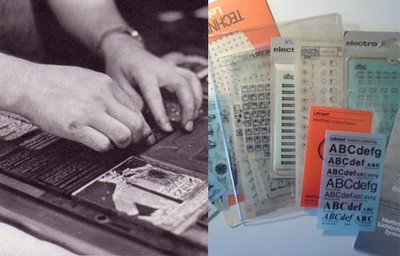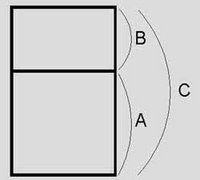The media environment which GooTube, Podshow, MySpace and others have helped to create seems to alarm and dismay many commentators. Advocates of democratization see a future of innovation, diversity and freedom. But there are many who complain that the explosion of user-generated content (whether textual, audio or video) has resulted in an erosion of quality, a banalization of content and a wide-spread absence of professional production values. Many such lamenters are clearly trying to defend the skill specialisations they have learned over the years as ‘old media’ professionals.
In the Times supplement (The Knowledge, 11 November 2006) Richard Morrison tries to find a middle ground on this topic.
“The ingredients needed to produce compelling art and entertainment remain what they have always been: inspiration, craftsmanship and a thorough grounding in the history and techniques of the genre. In the end, the people who muster those qualities will be the ones who dominate the new media.”
On the face of it, a reasoned viewpoint. The only problem I have is with the history and techniques of the genres in question. The history of blogging is extremely brief and the genre is still not fully and finally defined to the satisfaction of all practitioners. Many of the techniques for podcasting and vlogging are dependent on software programs which are still in beta.
So how should we view ‘dogs on skateboards’ punk media?
Michael Hirschorn writing in the current issue of Atlantic Magazine claims that “…this grittiness, lack of polish, and occasionally shocking intimacy constitute a new aesthetic of realness, much as the scratchiness, feedback, and ostentatious amateurishness of the Sex Pistols made everything else seem like mere affectation.”
I am reminded of a new aesthetic of realness which resulted from a much earlier phase of the digital revolution, the advent of Desktop Publishing about twenty years ago.

Those dismayed by DTP were above all the typographers and graphic designers. The poor typesetters were already under attack, since many designers had mastered the laborious and unforgiving art of Letraset, dry-transferable rub-off lettering. Before computer techniques, when artwork was prepared by hand, Letraset sheets were available with letters in a large range of typefaces, styles, and sizes, symbols, and other graphic elements. The letters could be transferred one by one to artwork being prepared, a tedious job.
The designers breathed sighs of relief when Desktop Publishing freed them of their Letraset chores. But yelped with indignation when they saw the result of ‘democratising’ the print medium.
Designers, after all, knew their Aster from their Ela Bold. (Aster is a font designed by Francesco Simoncini in 1958. The Ela font family was created by Gert Wiescher from Munich. The feeble attempt at witticism is entirely my own.)
 But suddenly there were rank amateurs producing printed ephemera with massive exuberance and no inkling whatsoever of established graphical principles. The North Huxtable Rabbit Breeders Association Newsletter might every month use another dozen different typefaces and employ all the weight and spacing options that PageMaker provided. Legibility, the Golden Section and the foolproof good taste of Helvetica be damned!
But suddenly there were rank amateurs producing printed ephemera with massive exuberance and no inkling whatsoever of established graphical principles. The North Huxtable Rabbit Breeders Association Newsletter might every month use another dozen different typefaces and employ all the weight and spacing options that PageMaker provided. Legibility, the Golden Section and the foolproof good taste of Helvetica be damned!
And yet, and yet… Thanks to desktop publishing entirely new print genres emerged, from flyers for club nights which are so visually breathtaking that they become collectors items to student-made school newspapers which look as good if not better than any Fleet Street broadsheet from the early eighties.
The same maturing process will certainly characterize the development of the audiovisual media, now in full-on punk upheaval. Twenty years on it will be possible to reflect on the history and techniques, but they will be those of new content genres, examples of which in their forerunner form may well be lurking even now among the millions of clips on YouTube.
 But suddenly there were rank amateurs producing printed ephemera with massive exuberance and no inkling whatsoever of established graphical principles. The North Huxtable Rabbit Breeders Association Newsletter might every month use another dozen different typefaces and employ all the weight and spacing options that PageMaker provided. Legibility, the Golden Section and the foolproof good taste of Helvetica be damned!
But suddenly there were rank amateurs producing printed ephemera with massive exuberance and no inkling whatsoever of established graphical principles. The North Huxtable Rabbit Breeders Association Newsletter might every month use another dozen different typefaces and employ all the weight and spacing options that PageMaker provided. Legibility, the Golden Section and the foolproof good taste of Helvetica be damned!


No comments:
Post a Comment